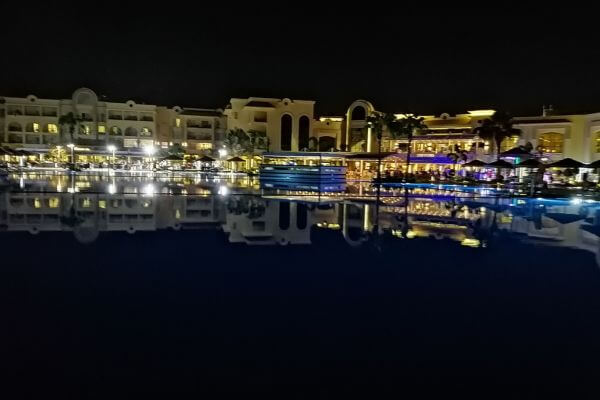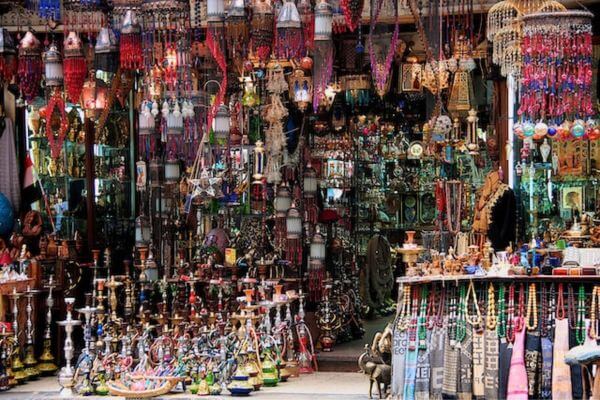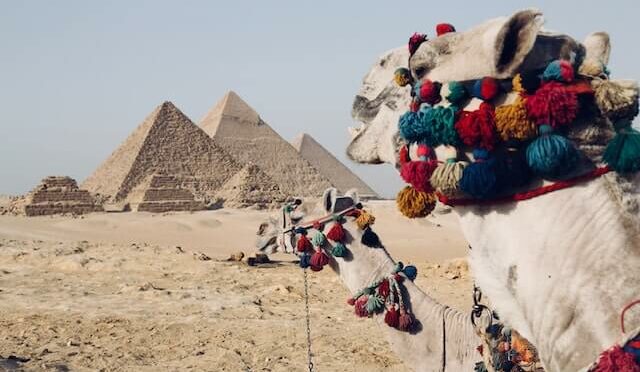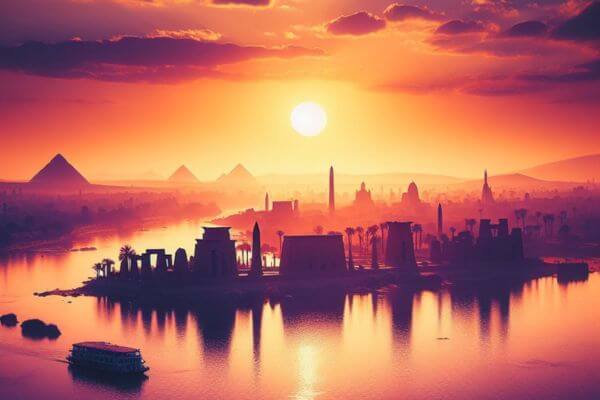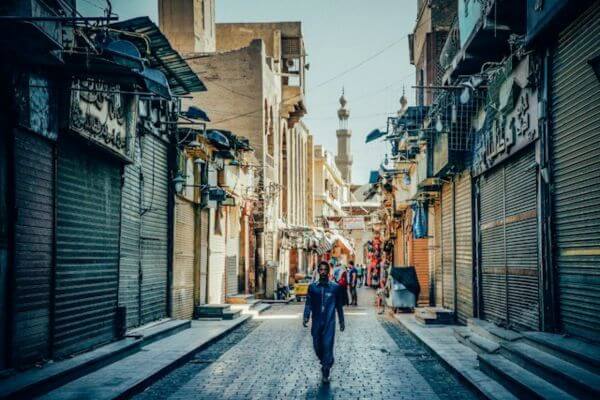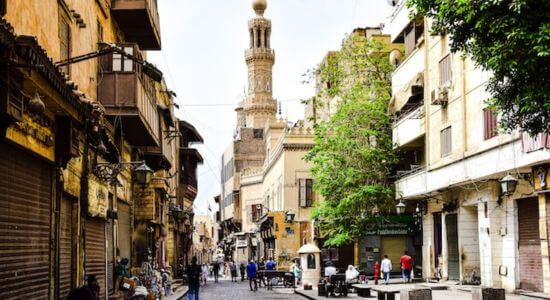Siwa Oasis Travel Guide For First-Time Visitors

The first time I saw photos of the salt lakes in Siwa Oasis, I knew I wanted to go. Their bright turquoise water surrounded by white salt looked unreal, and I couldn’t stop thinking about them.
For a while, I wondered how and when we could make the trip. During our family beach vacation in Marsa Matrouh, we finally made it happen by booking a one-day organized tour to Siwa.
In this travel guide, I’ll share everything you need to know for your own visit, what makes Siwa special, what you can see in just one day, how to get there, and tips to help you plan your trip.
Do you have only one day for Siwa Oasis?
➡️Book the same one-day tour to Siwa Oasis that we took, here.
What Makes Siwa Oasis So Special?
Siwa Oasis is one of those places that still feels untouched. It’s far from the big crowds and hasn’t been taken over by mass tourism. Life here moves at its own pace, and people still follow many of the old traditions.
Siwa is home to a Berber community with its own language, culture, and way of life that’s different from the rest of Egypt.

It’s tucked away in the Western Desert, just about 50 km from the Libyan border, so getting there includes a few army checkpoints, so don’t forget to bring your passport with you.
You’ll see olive and date trees everywhere, salt lakes that look unreal and have become one of the most Instagrammed spots in Egypt, and ancient buildings that have been standing for centuries.
It’s a peaceful place full of natural beauty, deep history, and a very special atmosphere.
Float in the Salt Lakes
Although the salt lakes weren’t our first stop, they were definitely the highlight of the day, and they deserve a special spot on this blog. The lakes are located outside the town, and we reached them on a bumpy road.
The first impression was like living a dream. The water was crystal clear with a stunning turquoise color, and you could see the white salt at the bottom. It looked even better than the photos.

There are many salt lakes around Siwa, but our guide, Mohamed, took us to some of the most remote ones. We had the whole place to ourselves. It was just us and total silence.
The salt levels are so high that swimming isn’t really possible. You simply lie back and float. It’s impossible to sink.
My dad made the mistake of trying to swim after his flip-flop and ended up hitting his knee on a salt rock, so don’t swim!
To get into the lake, the salt under your feet is mostly soft, so it’s fairly easy to walk in. But in some spots, it can be hard or sharp, so if you’re worried, bring water shoes.
The water is also said to be great for your skin and joints. I can say that when I got out, my skin felt super soft and smooth.
Aside from being beautiful, these lakes are a big part of the local economy. Siwa exports large amounts of salt to other countries.
Note: There are no proper changing rooms, just a few walls to give you a bit of privacy. There’s also a hose with fresh water you can use to rinse off after your dip.
Visit the Mountain of the Dead
Our first stop was the Mountain of the Dead, a small hill filled with more than 2,000 ancient tombs where elite people from the Greek and Roman periods were buried.
It’s incredible to think that as you walk around, you’re stepping through thousands of years of history.
Be careful where you walk, there are big open graves around, and it’s easy to miss a hole if you’re not paying attention.

We visited the tomb of Si-Amun, one of the most famous ones. Inside, we saw colorful paintings on the walls and ceiling.
Our guide, Mohamed, shared the story behind the artwork. It was about what happens after death, according to ancient beliefs.
After someone died, they were mummified and brought by cart to the gates of paradise. To get in, they had to pass through several doors. At each one, they had to say the name of a God or Goddess.
If they got it right, they moved forward. If not, they were punished. At the final stage, their heart was placed on one side of a scale, and an ostrich feather on the other.
If the weight was the same, it meant the person lived a good life and could enter paradise. But if the heart were heavier, a monster would take them away.
We also climbed to the top of the mountain, and the view over the Siwa Oasis was absolutely amazing. The entrance to the site was included in our tour, so we didn’t need to buy separate tickets.
Explore the Shali Fortress
Right in the center of Siwa, you’ll find the old town known as the Shali Fortress. “Shali” actually means “city” in the local language.
Back in medieval times, the people of Siwa faced constant attacks from nomads, especially during the harvest season for dates and olives.
Things got so bad that only 40 men from 7 families remained. They decided to build a fortress high on a rock to protect themselves. That’s how the Shali Fortress was born.
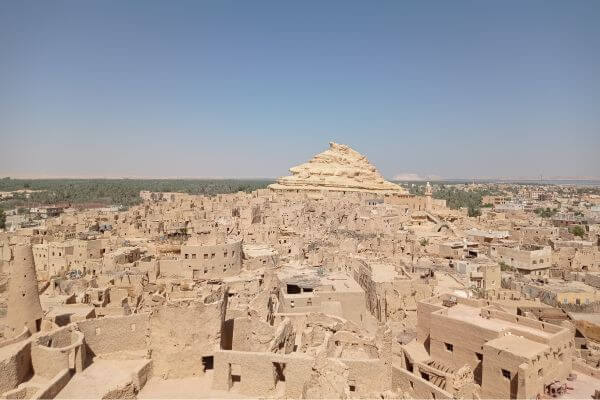
Construction started in the 12th century using natural materials like mud, salt, and palm tree wood. These natural materials worked well for the desert climate, keeping the houses cool in summer and warm in winter.
Today, you can walk through the ruins and even climb to the top for an amazing view over the Siwa Oasis. At the bottom of the fortress, there are a few small shops where you can pick up local souvenirs.
Visit the Siwa Museum
Just a few steps from the Shali Fortress, you’ll find the Siwa museum. It is a very small but lovely museum that gives you a nice look at what life in Siwa used to be like.

Inside, you’ll see traditional tools, handmade items, and other everyday objects that people once used.
Normally, there are traditional clothes displayed on the walls too, but when we visited, they had been taken down for washing
There’s also a small library in another room, where you can flip through books and learn a bit more about the history and culture of Siwa.
Visit the Temple of Amun
The Temple of Amun, also known as the Oracle Temple, dates back to the 6th century BC. It was once one of the most important temples in Egypt, dedicated to the god Amun.
Today, only ruins remain, but walking through them still feels special.
As always, our guide, Mohamed, had a story ready. He told us about Alexander the Great, who came all the way to Siwa to ask the oracle if he was really the son of Zeus Ammon.

He was taken into a room with a statue of the oracle, where he asked his questions. But the answers didn’t come from the statue. There was actually a secret room nearby where the high priest listened in and responded.
In the end, the oracle told Alexander exactly what he wanted to hear: yes, you’re the son of Zeus Ammon.
You can still see both rooms today, the one where Alexander stood and the hidden chamber behind it. And from the top of the hill, the view over Siwa Oasis is worth the climb. The entrance was included in our tour.
Tip: You might see a few local kids at the bottom of the temple selling little souvenirs. If you have some sweets or a dollar to spare, it’s a nice way to make them smile.
Visit Cleopatra’s Pool
Cleopatra’s Pool is a natural hot spring, and there’s a story that Queen Cleopatra used to bathe here because the water is good for your skin.
But when I asked our guide, Mohamed, he said it’s probably just a story to bring in tourists, as there’s no real proof.

We didn’t go in the water. Honestly, it didn’t look that nice, and only a few local boys were jumping in. Still, it’s a nice stop during the tour.
There are some small souvenir shops around the pool, and what’s great is that no one pushes you to buy anything. We bought some magnets for 2 EUR/USD each from children selling them there, and they were very happy.
There’s also a café and juice bar where you can sit down and enjoy a fresh juice. It’s a great spot to relax for a bit.
Hike Around Gabal Dakrur Mountain
Gabal Dakrur Mountain was our last stop on the tour. We didn’t hike to the top because my parents were tired from the heat, but we still took some great photos and listened to a story about the mountain.

Every year in October, there’s a harvest festival to celebrate picking all the olives and dates. People from the town come together and sit on the sand.
Everyone brings bread, but no one starts eating until a man at the top of the mountain says, “In the name of God.” Then everyone begins to eat, and the celebration goes on for three days.
Watch the Sunset at Fatnis Island
Fatnis Island is a small, peaceful spot where you can enjoy a beautiful sunset and sip on some refreshing juice.
This Island is part of the tour as a last stop, but because we finished the tour much earlier (thanks to our 6-year-old daughter and older parents who couldn’t keep up), we decided to skip it and head back to Marsa Matrouh.
Where to Stay in Siwa
Siwa is a quiet, traditional town that hasn’t been touched by mass tourism, so don’t expect big luxury resorts or five-star hotels. Instead, you’ll find small lodges and guesthouses that keep the feel of the old way of life.
We didn’t stay overnight in Siwa Oasis, but if we had, these are the places I would’ve considered. I’m not really the backpacker type, I like a bit of comfort, so these picks reflect that.

Panta Lodge Hotel– This is where our guide picked us up, and even though I didn’t see the rooms, the whole place looked lovely and well-kept. The rooms come with private bathrooms, and there’s a refreshing pool surrounded by olive trees. There’s also a restaurant and a bar on site.
Siwa Palace Lodge – A beautiful and clean lodge with an outdoor pool and a hot spring. The rooms have private bathrooms and include free toiletries. It also has a restaurant and a bar, but just a heads-up, it’s a bit outside of town.
Qasr El Salam– Another great option with air-conditioned rooms, private bathrooms, an outdoor pool, and a sun terrace. It’s clean and comfy, perfect for a relaxing stay.
Where to Eat in Siwa
Our guide took us to a place in the town centre called Abdu Restaurant. It’s a simple spot, nothing fancy, but the food was tasty and the staff were kind and helpful. The lunch was included in our tour, and we all really enjoyed it.

If you’re looking for other places to eat in Siwa, here are a few more options you can check out:
How to Get to Siwa
There are a few ways to get to Siwa from different parts of Egypt, like Cairo, Giza, Alexandria, or Marsa Matrouh. However, in Egypt, I highly recommend taking a tour. It’s the easiest way to visit all the highlights without worrying about planning or transport.
➡️Book your private one-day trip to Siwa here. This is the same tour we took, and we highly recommend Mohamed as our guide! Since it’s just a one-day trip, you’ll need extra transport to Siwa, which he arranged for us for 150 EUR / 160 USD from Marsa Matrouh.
➡️Book your private 3 days 2 nights Siwa Oasis here. With this tour, you can be picked up from Cairo, Giza, Alexandria, and Marsa Matrouh.
➡️Book your private 2 days 1 night Siwa Oasis here. With this tour, you can be picked up from Cairo, Giza, Alexandria, and Marsa Matrouh.
➡️Book your Siwa Safari tour here. This one is perfect if you’re already in Siwa and want to explore the desert, go sandboarding, and enjoy dinner and tea on the dunes. Pick-up is included.
❗All of these tours are with the same agency that we used.
If you’d prefer to go to Siwa on your own, there are buses or trains from Cairo, Alexandria, and Marsa Matrouh. Another option is a private transfer that you can book here.
Tips for Visiting Siwa Oasis
After our visit to Siwa Oasis, here are a few things I recommend:
- Bring your passport – There are army checkpoints on the way, and you’ll need it.
- Pack a towel – If you’re planning to dip into salt lakes and hot springs.
- Don’t forget sunscreen and sunglasses – The sun can be really strong, even outside of summer.
- If possible, visit in spring or autumn – We went in summer, and it was extremely hot.
- Bring cash – For souvenirs and tips.
- Don’t expect luxury – Siwa is all about simplicity, calm, and the traditional way of life. That’s the beauty of it.
- Wear comfortable shoes – Especially helpful for the Mountain of the Dead and Gabal Dakrur Mountain, or in the desert.
- Stay overnight if you can – We didn’t due to family reasons, but I wish we did.
Visiting Siwa Oasis: FAQs
Do you still have questions? Check below.
Is Siwa Oasis safe?
Because Siwa is close to the Libyan border, many people assume it’s not safe. Honestly, I also looked into the safety situation before we decided to go. But Siwa Oasis turned out to be a very peaceful place.
There’s high security in place, especially for tourists. On the way to Siwa, there are several army checkpoints where they check passports and sometimes even the back of the vehicle.
We were coming from an all-inclusive hotel, and everything was well-organized. Our driver and then the tour guide had to inform the police, sign some papers, and share where we were going.
So yes, you can feel safe visiting Siwa. That said, always check the current political situation before you go, as things can change.
Why should you visit Siwa Oasis in Egypt?
Siwa is a magical place, totally different from other parts of Egypt. It still holds on to traditional ways of life, and the people are kind and welcoming.
The biggest highlights are the salt lakes, hot springs, and fascinating history, all surrounded by stunning views. And you can’t miss the sea of olive and date palm trees covering the area.
The desert is the perfect place to relax and experience something unique.
Which city is closest to Siwa Oasis?
The closest city to Siwa Oasis is Marsa Matrouh. About a 3.5-hour drive.
How far is Siwa Oasis from Cairo?
Siwa is about 740 km from Cairo, and the drive takes around 8 hours.
I hope you found this article helpful! If you’re also interested in seeing the video version of our Siwa tour, make sure to subscribe to my YouTube channel here and watch the video here.
You may want to check:
Jaz Tamerina Hotel Review – Almaza Bay, Marsa Matrouh
13 Best Temples In Egypt You Must Visit
Breakfast In Cairo: 15 Best Breakfast Restaurants
